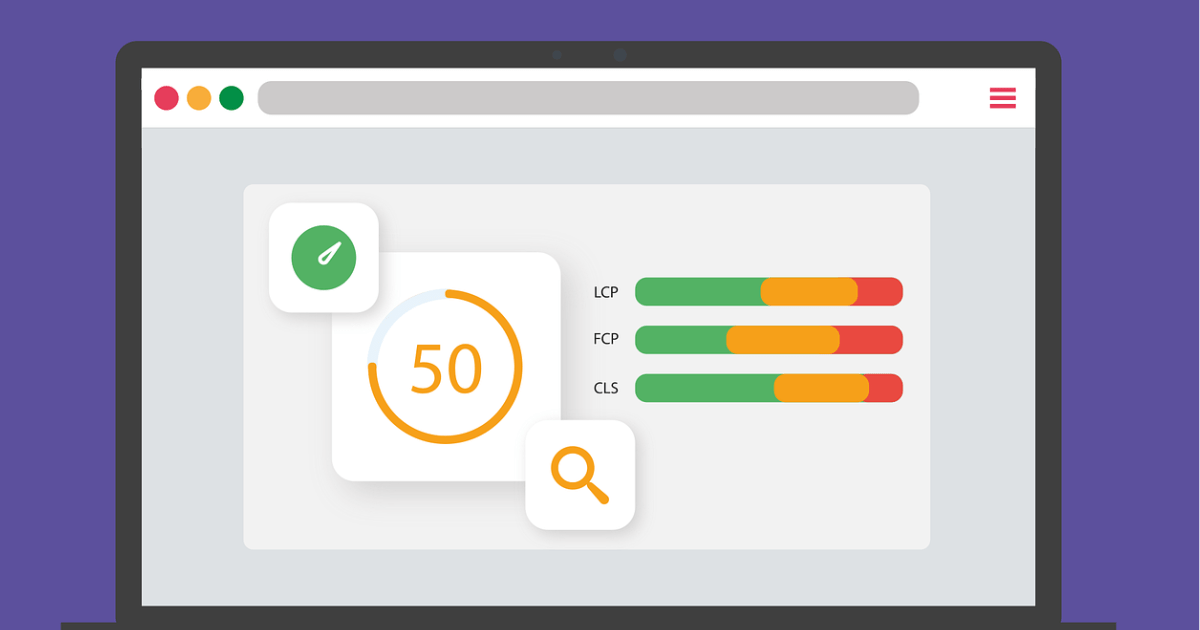“I want to know why internal linking is effective for SEO”
“I want to learn how to optimize internal links”
Do you have these thoughts?
If you are working on SEO, you have probably heard many times that “internal links are important.”
However, there are probably many people who cannot explain why.
Simply placing internal links without understanding their purpose won’t maximize their SEO impact.
Internal links are often underestimated compared to backlinks, but unlike backlinks, you can control them yourself.
By strategically placing internal links, you can make your content easier to index and improve your chances of ranking for major keywords, among many other SEO benefits.
In this article, we’ve summarized the following topics to help answer all your questions about internal links:
- What are internal links?
- The three SEO benefits of internal linking
- Five key points for optimizing internal links
- Precautions when placing internal links
- Where to place internal links (types)
- Tools for checking internal links
- Frequently asked questions about internal links
If you want to learn all about internal linking, please read until the end.
Table of contents
What are internal links? Links that connect pages within the same website
Internal links are links that connect pages within the same website.
For example, the following link is considered an internal link because it links to another page within the same site:
What determines SEO difficulty? Introducing a check tool and three criteria -webma-
The opposite concept of internal links is “external links.”
External links are links that connect your site to other sites. *External links are also commonly referred to as “backlinks” or “outbound links.”
Three SEO benefits of internal links
So, how do internal links affect SEO?
There are three main SEO benefits.
- Benefit 1: Easier to get indexed
- Benefit 2: Search engines understand which pages are important
- Benefit 3: User search behavior is more likely to be completed within the site
Let’s go through each of these.
1. Easier to get indexed
By optimizing internal links, you can make it easier for new pages to be indexed and increase the speed at which they are indexed.
This is because internal links are one of the pathways through which Google discovers new pages on the web.
If your site has a well-structured internal linking system, crawlers can easily navigate through your site by following the links.
On the other hand, if there are “orphan pages” that are not linked from any other page, Google’s crawlers won’t be able to reach them.
Even if an “orphan page” is discovered by Google through another route, it may not be indexed if it lacks internal links, as it could be considered “less important.”
Reference: English Google Webmaster Central office-hours from October 29, 2019 – YouTube
Recently, many people have been struggling with “articles not getting indexed,” so if this applies to you, consider reviewing your internal links.
2. Search engines understand which pages are important
Internal links are one way to show the “relative importance of pages” on your site.
In other words, they help Google understand which pages are important on your site.
To understand this, think of internal links as you would “backlinks” from external sites.
In SEO, pages that receive many high-quality backlinks tend to be highly valued, right?
The same goes for internal links; pages with more internal links pointing to them are more likely to be evaluated highly.
This is because links pass “SEO power” (often called link juice) to the pages they link to.
By concentrating internal links on the pages you want to rank higher, you can signal to Google, “This page is important, so please evaluate it highly.”
3. User search behavior is more likely to be completed within the site
First and foremost, internal links are for the visitors to your website.
For example, if there is content that could not be fully explained or related topics, providing internal links allows users to follow them and resolve related queries as well.
Moreover, if the internal link structure is appropriate, users can easily find the information they are looking for.
In other words, internal links improve user convenience and satisfaction.
If users can solve their problems on your site, they won’t need to search again with a different keyword, and their search behavior is completed within the site.
As a result, there is a high possibility that Google will interpret this as “the search intent was fulfilled on this site,” which makes internal links effective for SEO.
5 Key Points for Optimizing Internal Links
So, what should you focus on when setting up internal links?
Here, we will share 5 key points for optimizing internal links.
- Point 1. Link to highly relevant pages
- Point 2. Be mindful of keywords in anchor text
- Point 3. Focus links on important pages (pages you want to rank higher)
- Point 4. Include alt attributes for image links (banner links)
- Point 5. Standardize URLs
1. Link to Highly Relevant Pages
When setting internal links, the basic principle is to “link to highly relevant pages.”
Connecting highly relevant pages increases the comprehensiveness and expertise on the topic, allowing users to navigate through internal links to resolve all their questions.
Sometimes, people focus on just increasing the number of internal links and end up linking to less relevant pages, which is not recommended.
As the number of links increases, the value of each individual link decreases relatively.
By linking highly relevant pages, you can efficiently enhance the evaluation of both pages.
How to Find Highly Relevant Pages
When publishing new content, check if you can set internal links to relevant content.
You can find relevant pages within your site using the following methods:
- Use “site search” to search for the target keywords of the new content
- Use the “site:” command for Google search
Example: site:https://webma.sg “301 redirect”
For example, if you publish new content about “301 redirects,” by conducting a site search with “301 redirect” within quotation marks, you will see pages mentioning 301 redirects among the indexed pages.
Check the displayed pages to see if there are places where you can add links.
2. Be Mindful of Keywords in Anchor Text
For the anchor text of internal links, use the target keywords of the linked page.
Anchor text refers to the text of a link.
Both search users and search engines look at anchor text to determine “what kind of page the link leads to.”
Anchor text is considered one of the ranking factors that directly affect search rankings, impacting the evaluation of the linked page.
For instance, if the anchor text includes the keyword “internal optimization,” Google will recognize the linked page as being related to “internal optimization.”
As a result, the linked page is more likely to rank for the keyword “internal optimization.”
However, overusing exact match anchor text might be considered an attempt to manipulate rankings by Google, leading to penalties, so be cautious.
※Exact match = using the target keyword of the linked page as the anchor text directly.
If you use the page title as the anchor text, it should naturally include keywords, so using the title as anchor text is recommended.
Avoid using the following types of anchor text as they do not effectively convey the information of the linked page:
- Generic text like “Click here” or “More details here”
- Directly pasting the URL like “https://webma.sg/study/seo-●●●/”
- Using text unrelated to the destination page
- Using excessively long text
For more detailed information on how to optimize anchor text, please refer to the page below.
What is Anchor Text? Explaining its Impact on SEO and Key Points for Creation -webma-
3. Focus Links on Important Pages (Pages You Want to Rank Higher)
Increase links to important pages on your site (i.e., pages you want to rank higher).
As mentioned earlier, SEO power (link juice) flows from the linking page to the linked page through links.
For example, if you want to rank higher for a big keyword, gather links from pages related to long-tail keywords and mid-tail keywords, as it will make it easier to rank higher.
Recently, considering the SEO properties of such internal links, the “topic cluster model” structure is becoming mainstream.
This method strategically organizes a group of articles on the same topic, centered around a pillar page (main topic) using internal links.
Internal link structures are also related to the content strategy of “what keywords to create content for,” so it’s advisable to design the overall structure in advance.
4. Include alt Attributes for Image Links (Banner Links)
When using images as links, be sure to include the “alt attribute.”
The alt attribute serves as a substitute for anchor text.
Google provides one reason for using the alt attribute in their official page as follows:
Another reason is that when using an image as a link, the alt text of that image is treated similarly to anchor text in a text link.
Source: Search Engine Optimization (SEO) Starter Guide – Using alt Attributes
Originally, the alt attribute is meant to describe the content of an image.
However, when an image is used as a link, it functions as anchor text describing the content of the linked page, so keep this in mind.
For information on the SEO effects of alt attributes and how to use them correctly, please refer to the article below.
What is the alt Attribute? Explaining Its Importance in SEO and How to Use It Correctly -webma-
5. Standardize URLs
A commonly overlooked aspect is the URL of the linked page.
To ensure Google evaluates internal links correctly, you need to standardize the URL to one version.
Even if the displayed content is the same, if the link URLs are inconsistent, such as the examples below, the evaluation can be dispersed.
- Presence or absence of a trailing “/”
- Presence or absence of “index.html” at the end
- Presence or absence of “www”
- https vs. http
- Presence or absence of parameters
- Mobile URLs
As noted by Google, you should standardize URLs.
Standardize the version of the URL that reaches the document
To avoid having different versions of URLs linking to the same document (which can cause the evaluation of the same content to be split across different URLs), use one URL in the page structure and internal links. If you notice that users are accessing the same content from multiple URLs, it is recommended to set up 301 redirects from the less preferred URLs to the main URL. If redirection is not possible, using the rel=”canonical” link element is another option.
For methods to normalize URLs using 301 redirects or canonical tags, refer to the articles below.
301 Redirects: What Are 301 Redirects? Their Impact on SEO and How to Set Them Up Correctly -webma-
Canonical Tags: What Are Canonical Tags? A Thorough Explanation of How to Optimize SEO with Proper Tagging -webma-
Points to Note When Setting Internal Links: Do Not Use the nofollow Tag
A common mistake when setting internal links is using the “nofollow tag.”
The nofollow attribute is not needed for internal links.
The nofollow tag is used to instruct search engines not to follow the link.
If you add a nofollow tag to an internal link, you will not gain the SEO benefits you would otherwise obtain.
Matt Cutts from Google has stated, in response to a question about whether to use nofollow on links back to the homepage, “No. Do not add nofollow to internal links.”
For information on when to use the nofollow tag, please refer to the article below.
What is the nofollow Attribute? Proper Usage and Its Relationship with SEO -webma-
Internal Link Placement (Types)
The main places to set internal links are as follows:
- Text links within the main content
- Global menu
- Breadcrumbs
- Sidebar and footer menus
Sometimes people mistakenly recognize only in-article links as “internal links,” so it’s worth checking.
1. Text Links within the Main Content
These are links placed within the body of the article.
If there are articles answering “additional information” or “questions users are likely to have next” that couldn’t be covered within the article, provide links within the main content.
Since links to related pages can be included naturally, there is a higher likelihood that users will click on them.
2. Global Menu
The global menu or global navigation consists of links common across all pages of a website.
Having a global menu allows users to quickly find their desired page.
It is common for the global menu to reflect categories.
3. Breadcrumbs
Breadcrumbs are a collection of links showing the hierarchy from the homepage to the current page.
Breadcrumbs help users and crawlers understand the site’s hierarchy and assist users in returning to the homepage or a higher level.
This makes it easier for both users and crawlers to grasp the site’s hierarchical structure.
4. Sidebar and Footer Menus
Internal links are also placed in the sidebar and footer.
The following image shows the footer of our site, where it is common to include internal links to “related articles” and key pages.
In the next section, we will explain how to check the internal linking situation of your own site.
How to Check Internal Links
You can check the status of internal links using “Google Search Console.”
Follow these steps to check:
1. Log in to Search Console and click on “Links” in the left-hand tab.
2. Click on “Details” under “Internal Links” on the right side of the screen.
3. The total number of internal links and the number of internal links for each page will be displayed.
Please check the status of your website’s internal links using the above method.
Frequently Asked Questions About Internal Links
Here, we answer three common questions about internal links.
1. Are too many internal links bad?
There is no upper limit on the number of internal links you can place on a page.
However, adding too many links can dilute the value of the internal links themselves, so it’s best to avoid excessive linking.
John Mueller from Google has commented on this topic, saying:
Yes. If you add so many links that the structure becomes unclear and the value of the site structure diminishes, it becomes difficult for us to understand what is important.
Showing relative importance can be very valuable because it provides more opportunities to fine-tune how you want to appear in search results.
Source: English Google SEO office-hours from July 2, 2021 – YouTube
2. Does the importance of internal links vary depending on their location?
According to John Mueller from Google, the importance of internal links does not vary solely based on their location.
Reference: Does Location Of Internal Links On A Page Matter For SEO & Google Search?
However, links within the main content are considered more important for Google to understand the content compared to those in headers, sidebars, or footers.
Additionally, it is believed that the “Reasonable Surfer Model” is currently in use.
This model adjusts the amount of SEO value passed to the linked page based on the estimated click-through rate of the link.
In short, it’s not the location of the link but rather “clickable links” that are important.
3. How can I tell if my internal linking structure is appropriate?
While there are theories on how to set internal links, the optimal structure varies by website.
If you’ve improved your internal link structure but haven’t seen any changes, or if you’re unsure if your internal link structure is appropriate, consider consulting a professional.
[Summary] The Impact of Internal Links on SEO is Significant! Aim for Ranking Improvement through Optimization
The SEO benefits of internal links are substantial.
- Benefit 1. Easier indexing
- Benefit 2. Important pages are communicated to search engines
- Benefit 3. Users’ search behavior tends to be completed within the site
By optimizing internal links alone, you can efficiently enhance the overall evaluation of your website, and it’s common to see significant improvements in rankings.
Please review your website based on the five key points for optimizing internal links introduced here.
- Point 1. Link to highly relevant pages
- Point 2. Be mindful of keywords in anchor text
- Point 3. Focus links on important pages (pages you want to rank higher)
- Point 4. Include alt attributes for image links (banner links)
- Point 5. Standardize URLs
At Excore, we support your SEO needs.
If you have any concerns regarding SEO or web marketing beyond internal links, please feel free to consult with us.




